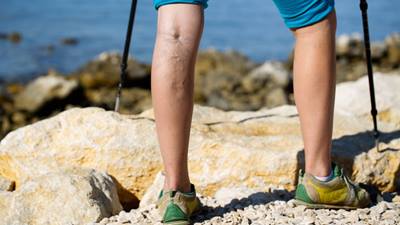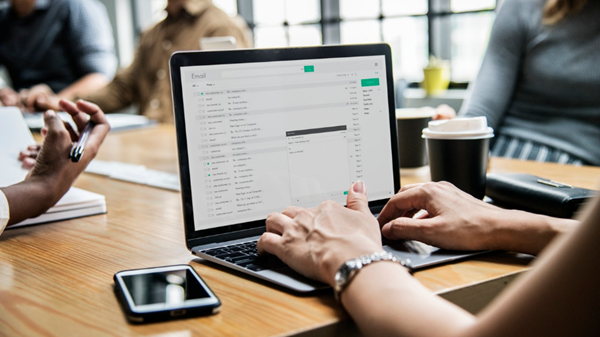If you’ve noticed protruding blue or green veins behind your knees, calves or thighs, or had pain or heaviness in your legs or swelling in your feet and ankles, varicose veins may be the culprit. Varicose veins are a common vein problem, and treatment options are simple.
What Are Varicose Veins?
To understand varicose veins, it’s helpful to understand how veins function. Arteries carry blood away from the heart to the rest of the body. Veins carry blood from the tissues back up to the heart. Within the veins are valves, which open and close to prevent blood from flowing backward into the vein. Since the blood is moving against gravity, toward your heart, having strong vein walls and strong valves keeps the blood flowing properly.
But when the vein walls are stretched or damaged, or if the valves are weak and don’t close properly, blood doesn’t move efficiently through the veins. Instead, it can back up to the previous valve, adding extra pressure. As blood pools in the vein, varicose veins, swelling in the legs and feet, and even blood clots can develop.
Common Causes of Varicose Veins
Increased pressure in the vein can be the result of:
- Standing or sitting for long periods, causing blood to pool in the vein

- Inactivity
- Being overweight or obese
- Family history of vein problems
- Smoking
- Pregnancy
- Previous blood clot, injury or recent surgery
To diagnose varicose veins, your doctor will talk with you about your symptoms, examine you and perhaps use a duplex ultrasound to form images of your vein and blood flow to determine the problem.
Treating Varicose Veins
When varicose veins create cosmetic concerns or physical discomfort, you want to take care of the underlying issues. The first step involves lifestyle changes, and if those are not effective, medical procedures may be used.
Lifestyle strategies include:
- Alternating between sitting and standing, particularly when in one place for a long period of time
- Keeping legs uncrossed while sitting
- Raising your legs above the level of your heart when sitting, resting or sleeping
- Being physically active to improve muscle tone and keep blood moving
- Losing weight if you are obese or overweight
- Avoiding tight clothing, which can make varicose veins worse
- Wearing lower heeled shoes and only wearing high heels for short periods of time. This will help blood move through your calf muscles more effectively
- Wearing compression socks to keep blood from pooling and to decrease leg swelling
In years past, the typical medical procedure for varicose veins was to remove the damaged vein, which was a surgical procedure. Today, those with varicose veins have the option of endovenous ablation. This is a minimally invasive, outpatient treatment that seals the vein shut so blood travels through other undamaged veins. The process is simple and offers significant relief of symptoms.
If you have pain in your legs or are concerned about varicose veins, contact us to learn more about your treatment options.
Choose to Stay in Touch
Sign up to receive the latest health news and trends, wellness & prevention tips, and much more from Orlando Health.
Sign Up for HealthBeat




